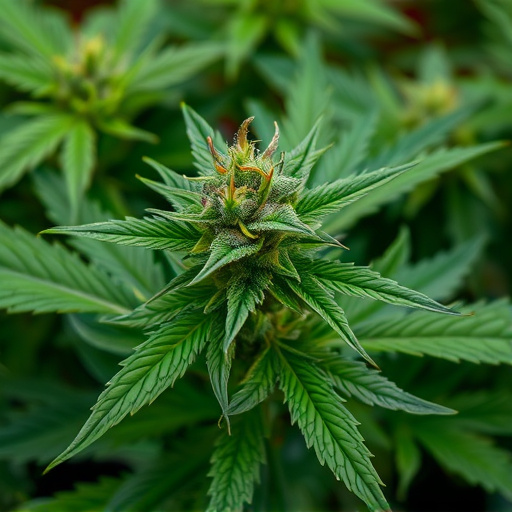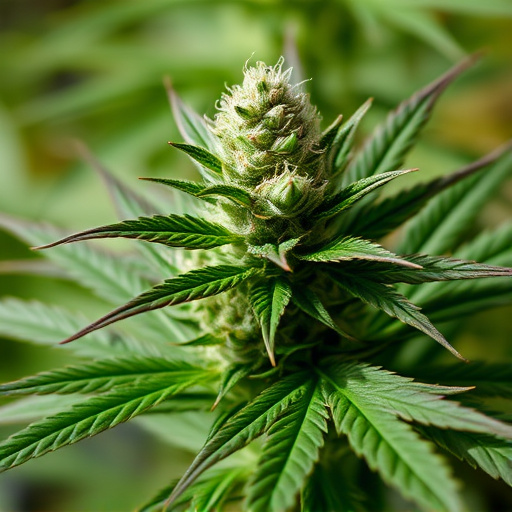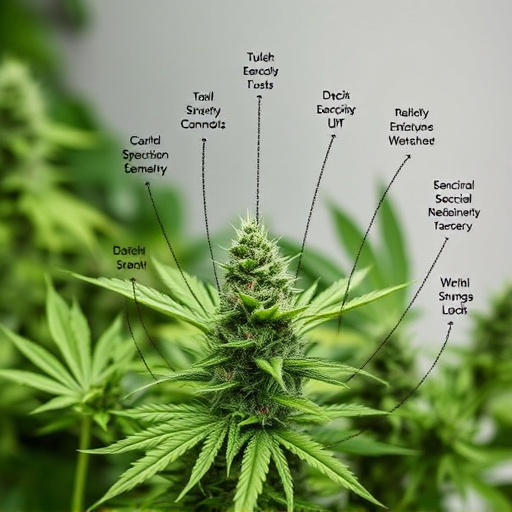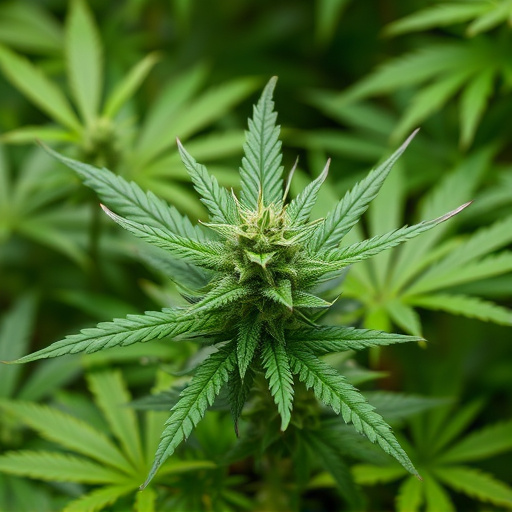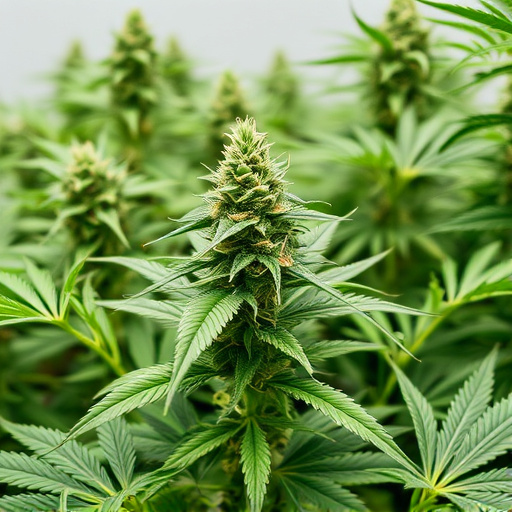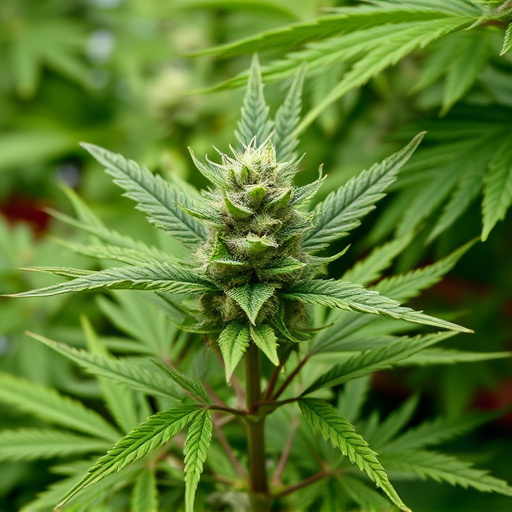Cannabinoids like Cannabidiol (CBD) in CBD-dominant strains of medical cannabis interact with our body's endocannabinoid system (ECS), offering therapeutic benefits without psychoactive effects from Tetrahydrocannabinol (THC). These strains, cultivated for high CBD content, provide milder experiences and unique medical advantages. Understanding cannabinoids empowers consumers to make informed choices when selecting suitable strains tailored to their specific needs, such as anxiety, pain, or inflammation relief. Decoding strain characteristics is crucial for unlocking the therapeutic potential of different medical cannabis varieties.
Discover the power of CBD-dominant strains, a game-changer in the world of medical cannabis. This comprehensive guide explores how these unique strains work, delving into the science behind cannabinoids and their interaction with our endocannabinoid system. We’ll decode strain characteristics, revealing the potential benefits of CBD-rich plants for various health conditions. Understanding these building blocks is crucial for navigating the diverse landscape of modern cannabis treatments.
- Understanding Cannabinoids: The Building Blocks of CBD-Dominant Strains
- How CBD Interacts with the Endocannabinoid System
- Decoding Strain Characteristics: Unlocking the Potential Benefits of CBD-Rich Plants
Understanding Cannabinoids: The Building Blocks of CBD-Dominant Strains
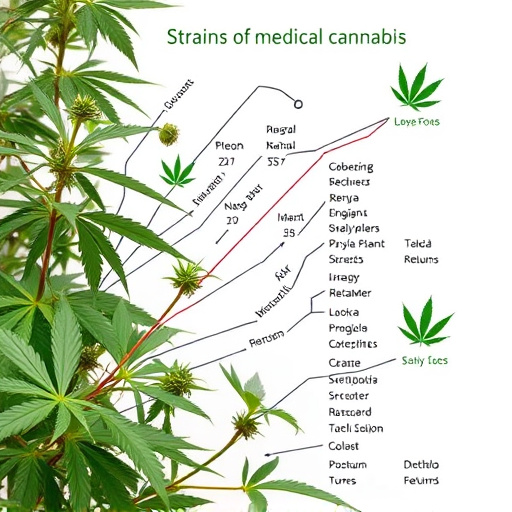
Cannabinoids are the fundamental building blocks of CBD-dominant strains, playing a crucial role in their therapeutic potential and unique effects. These chemical compounds are produced naturally by the cannabis plant and interact with our body’s endocannabinoid system (ECS), which regulates various physiological processes. Among these, Cannabidiol (CBD) has gained significant attention for its non-psychoactive properties, making it a popular choice among users seeking the benefits of medical cannabis without the mind-altering effects associated with Tetrahydrocannabinol (THC).
CBD-dominant strains are cultivated to have a higher concentration of CBD compared to other cannabinoids. This means that while THC levels might be present, they are minimal, ensuring a milder high and focusing on the therapeutic advantages of CBD. By understanding these compounds and their interactions with our bodies, consumers can make informed choices when selecting strains for specific medical conditions, leveraging the potential benefits of different cannabis varieties.
How CBD Interacts with the Endocannabinoid System

The interaction between CBD (cannabidiol), a prominent compound found in strains of medical cannabis, and the endocannabinoid system (ECS) is a fascinating aspect of understanding its therapeutic effects. The ECS is a complex biological system that plays a crucial role in maintaining homeostasis, or balance, within the body. It consists of endocannabinoids, receptors, and enzymes that work together to regulate various physiological processes.
CBD interacts with the ECS by binding to specific receptors, primarily CB1 and CB2, although its interaction is somewhat different from that of THC (tetrahydrocannabinol). This binding can modulate pain perception, reduce inflammation, and influence mood, making CBD a valuable component in many strains of medical cannabis. The ability of CBD to interact with the ECS non-psychoactively has made it a popular choice for those seeking the therapeutic benefits of cannabis without the associated mental alterations.
Decoding Strain Characteristics: Unlocking the Potential Benefits of CBD-Rich Plants

Decoding the characteristics of different strains of medical cannabis is key to unlocking the potential benefits of CBD-rich plants. Each strain possesses unique terpene profiles and cannabinoid compositions, which significantly influence its therapeutic effects. For instance, certain strains may have higher levels of CBG (Cannabigerol), known for its anti-inflammatory properties, while others may be rich in THC (Tetrahydrocannabinol), responsible for the plant’s psychoactive effects.
Understanding these variations allows consumers to choose strains best suited to their needs. CBD-dominant strains, in particular, offer a non-intoxicating option, making them ideal for managing anxiety, pain, and inflammation without the mental cloudiness associated with THC. By decoding strain characteristics, individuals can make informed decisions about which plants will provide optimal benefits for their specific health concerns.
CBD-dominant strains of medical cannabis offer a promising avenue for those seeking natural relief. By understanding the interplay between cannabinoids, the endocannabinoid system, and specific strain characteristics, we can harness the potential benefits of these plants. Further research and exploration of these strains may lead to innovative treatments, providing a more holistic approach to wellness.
